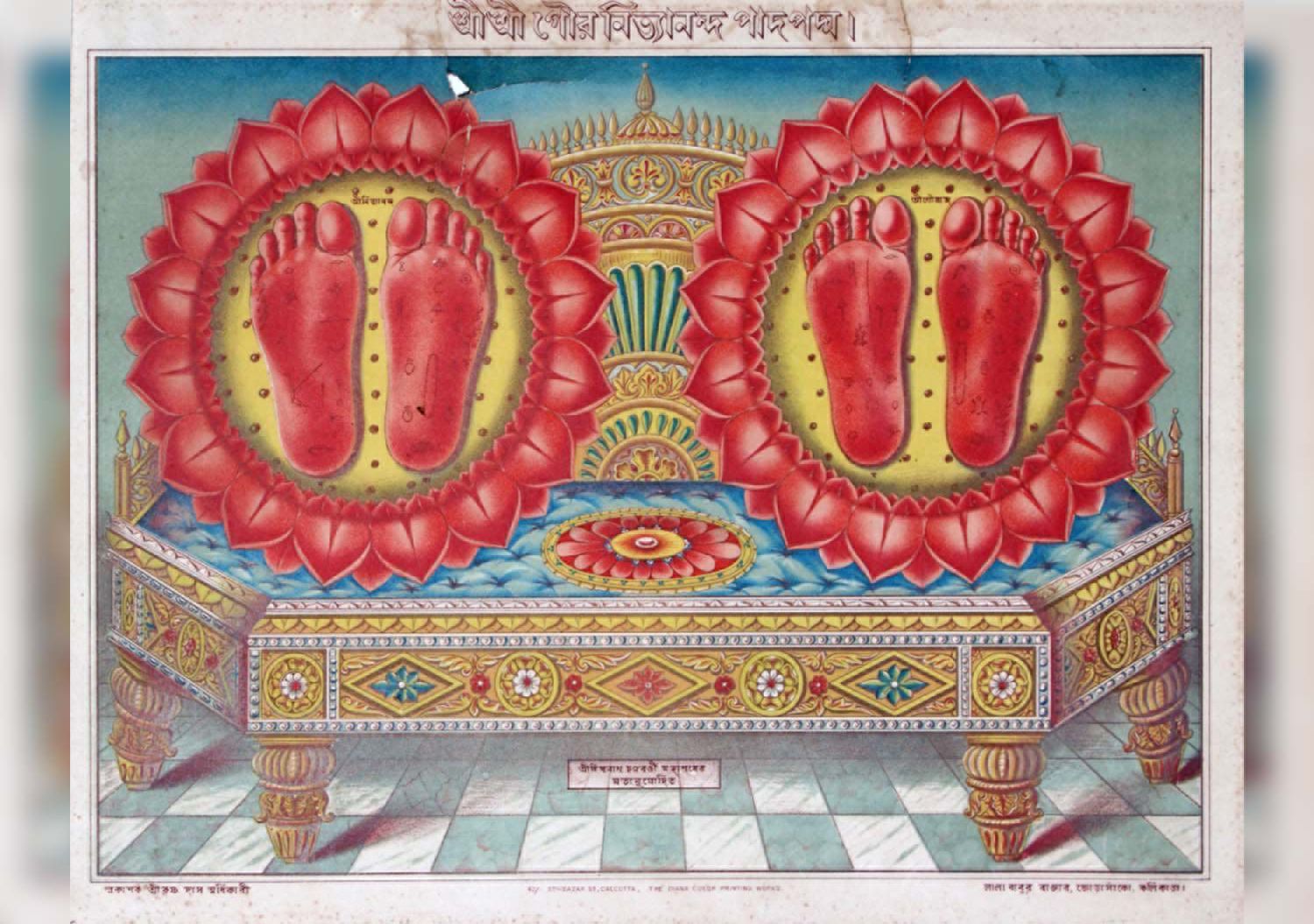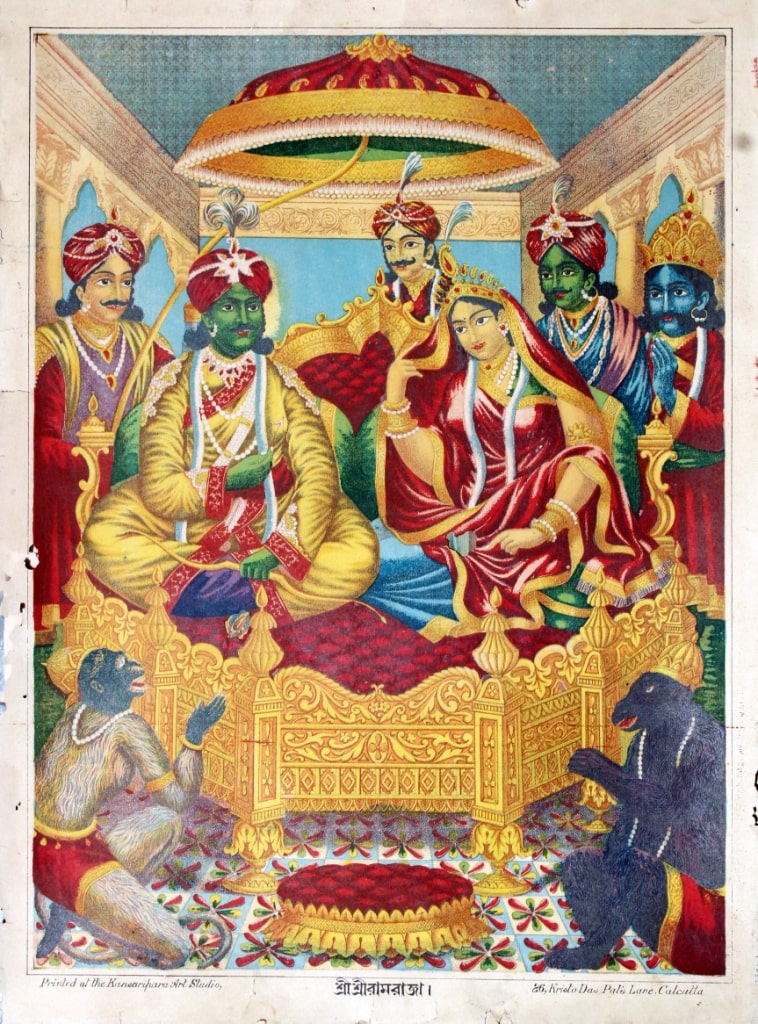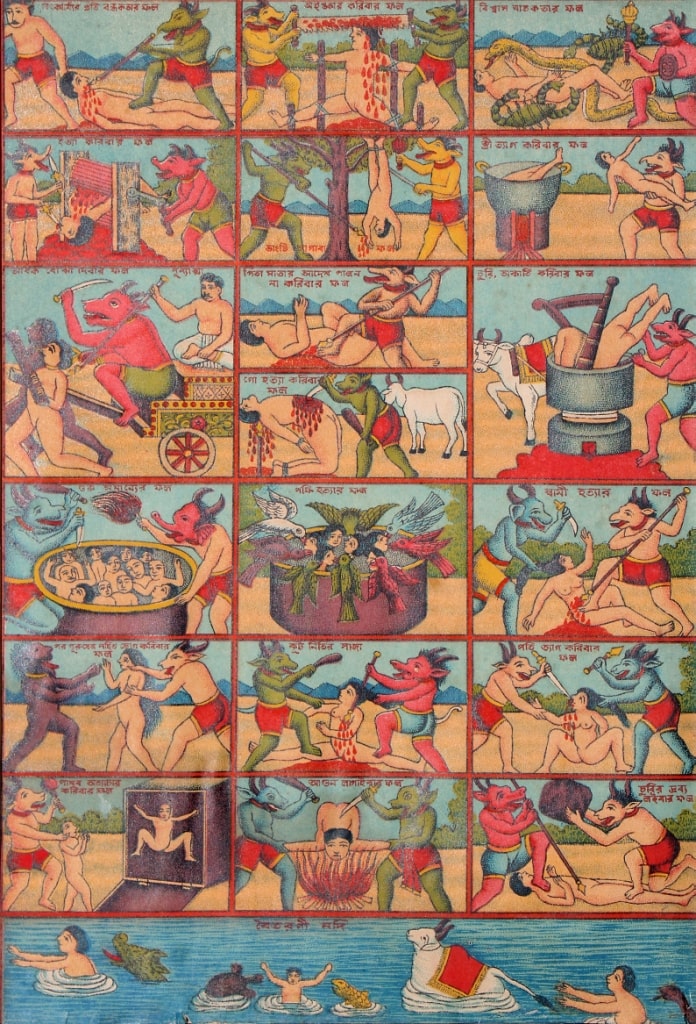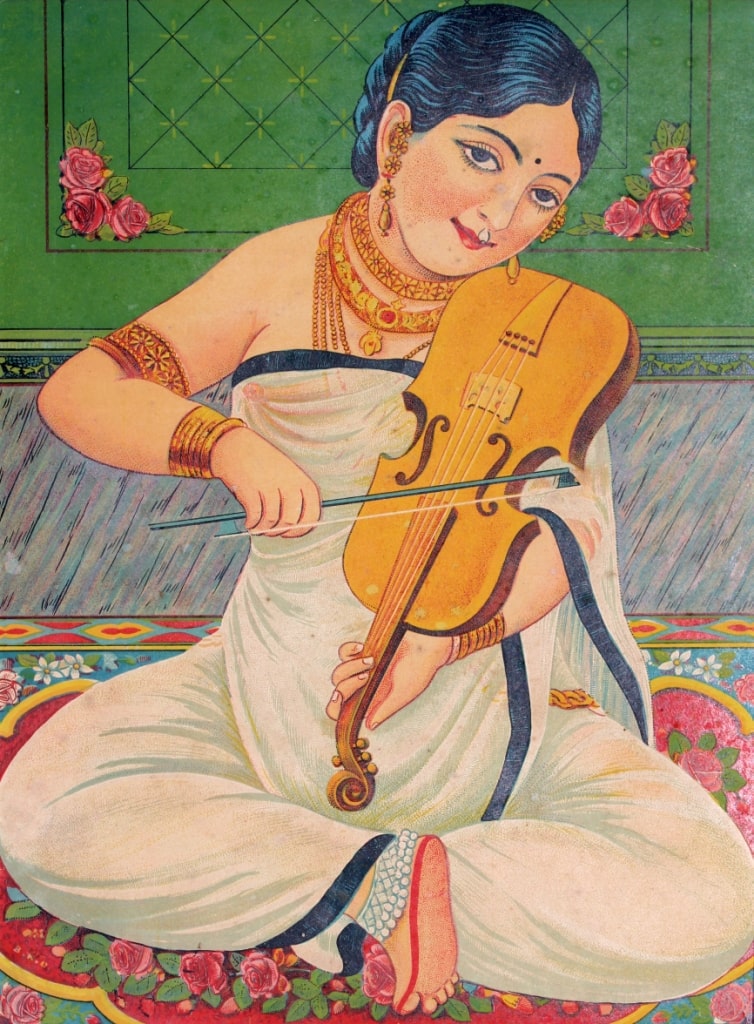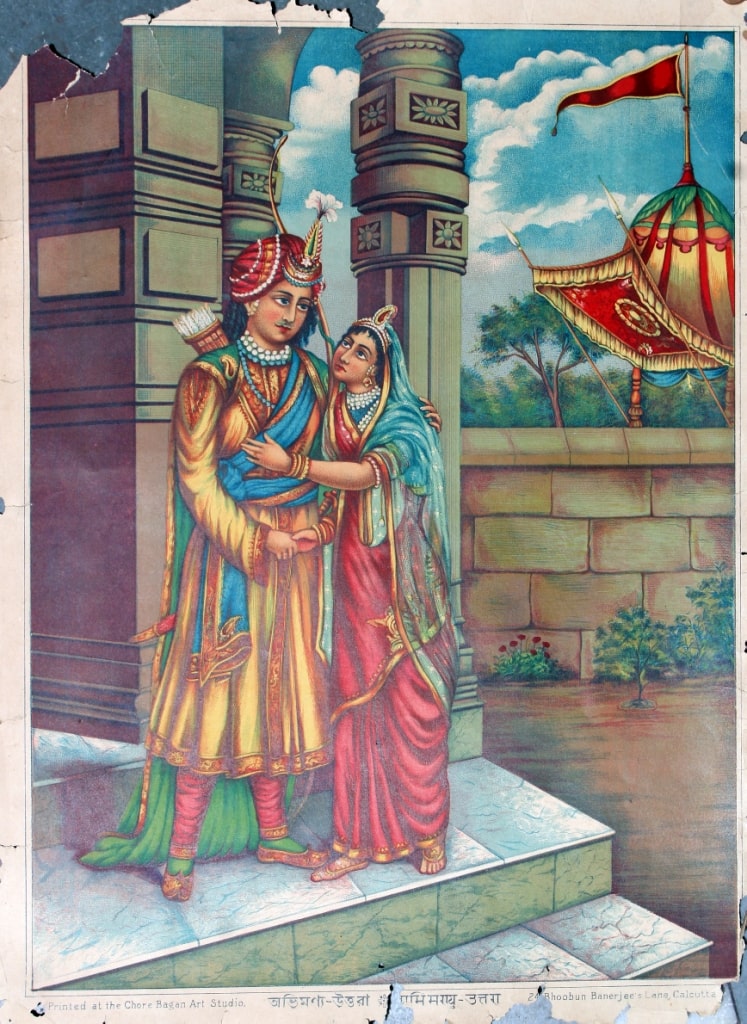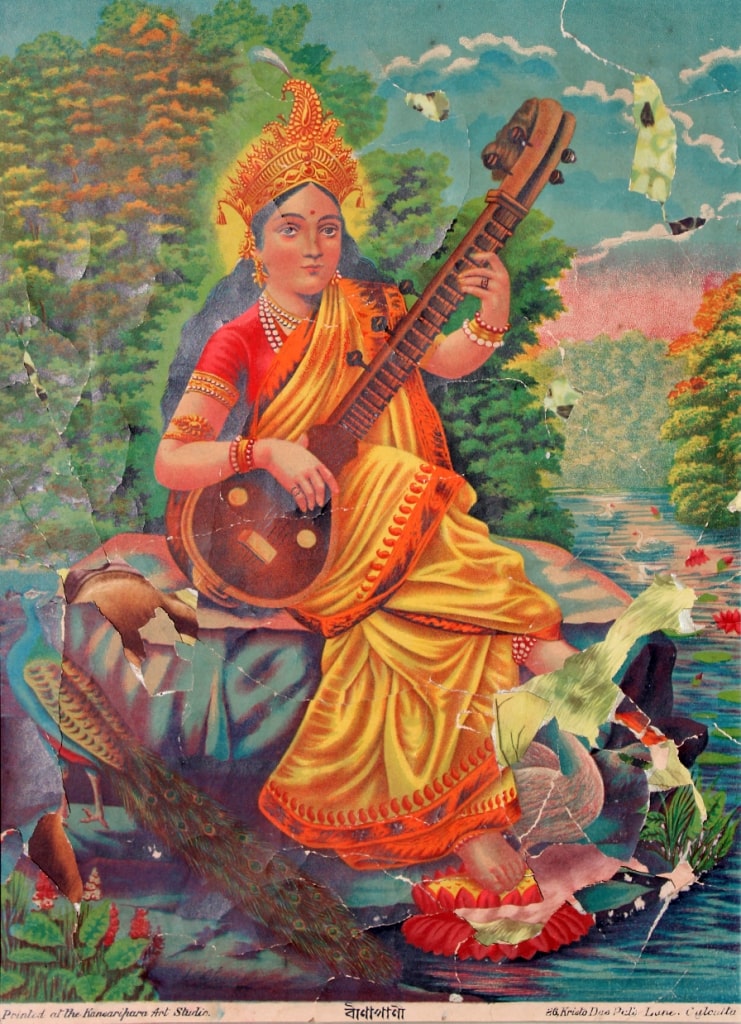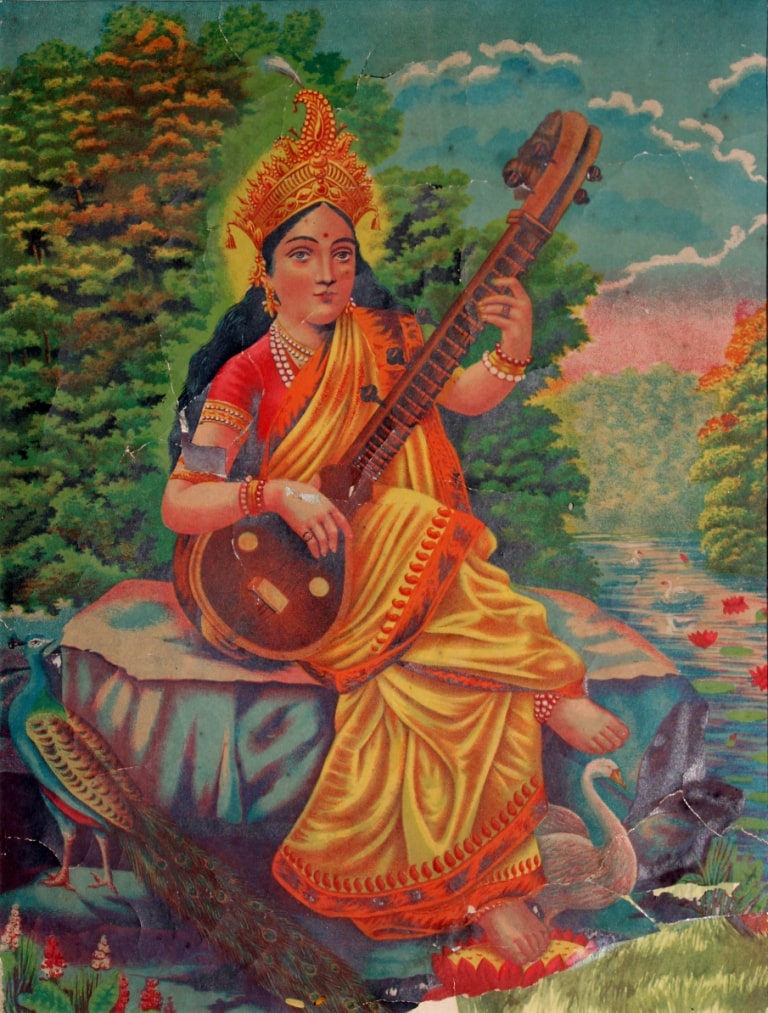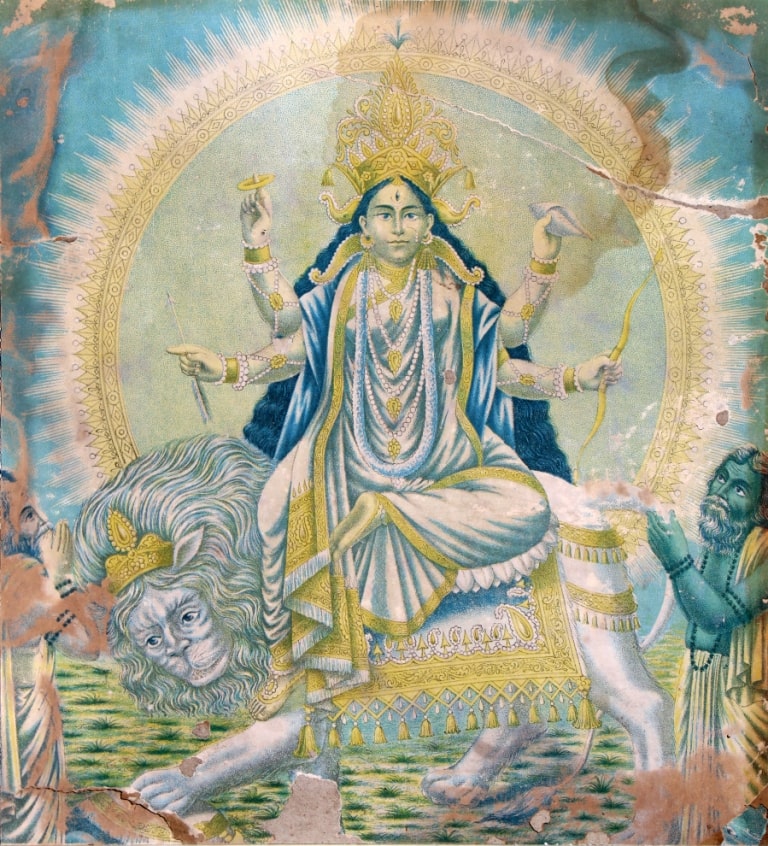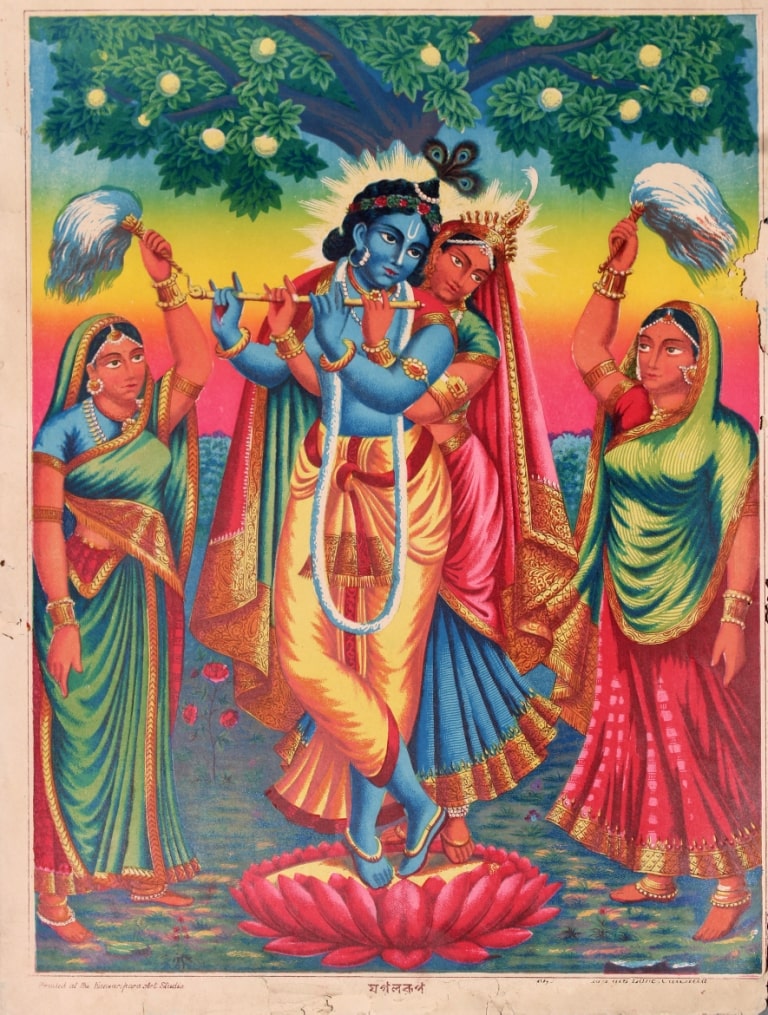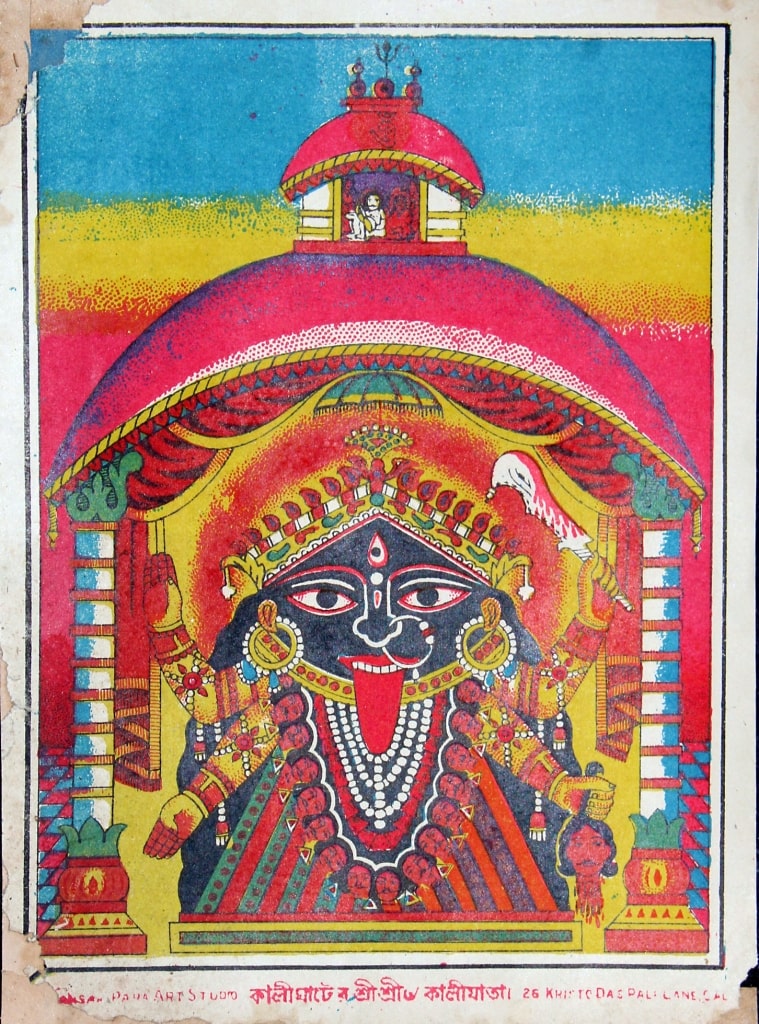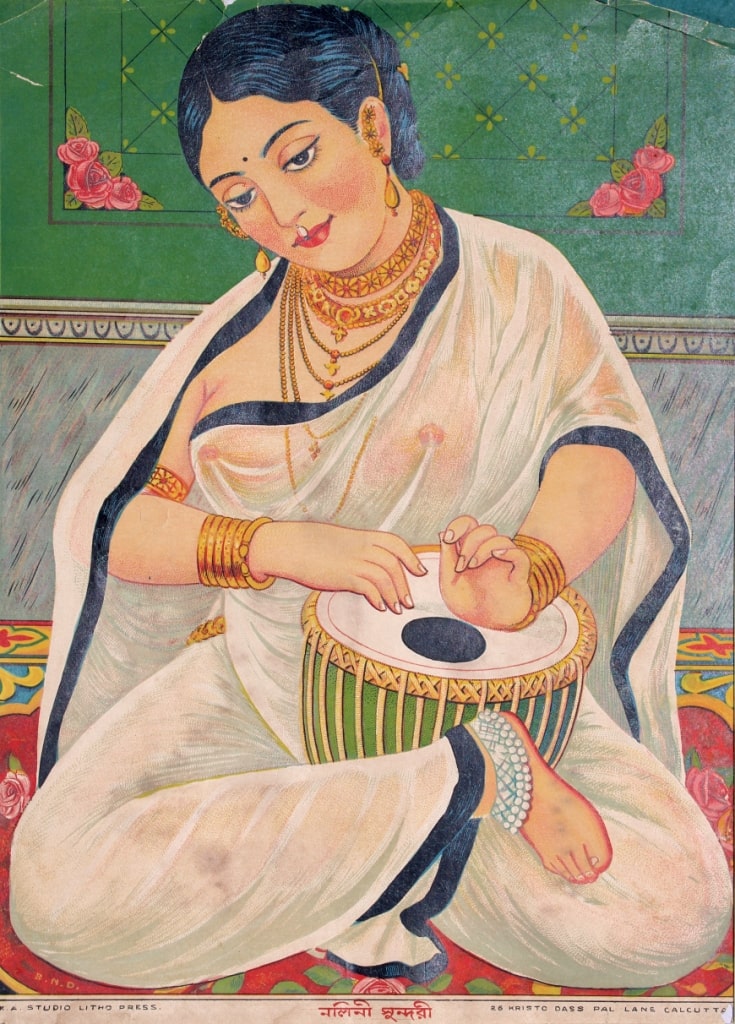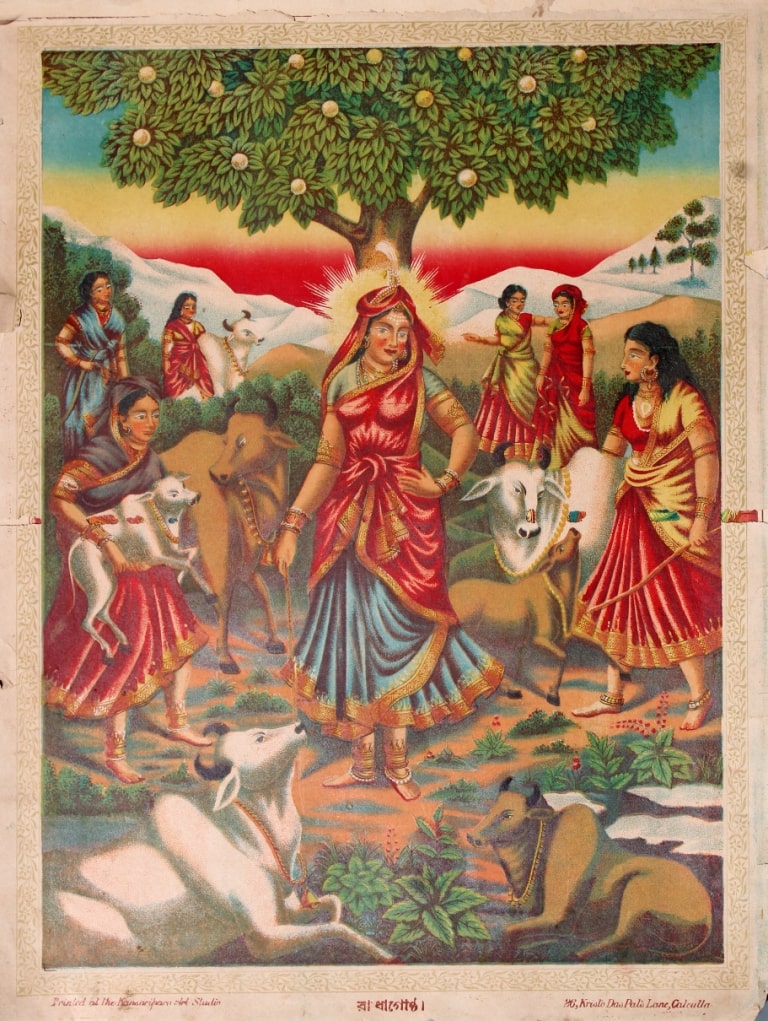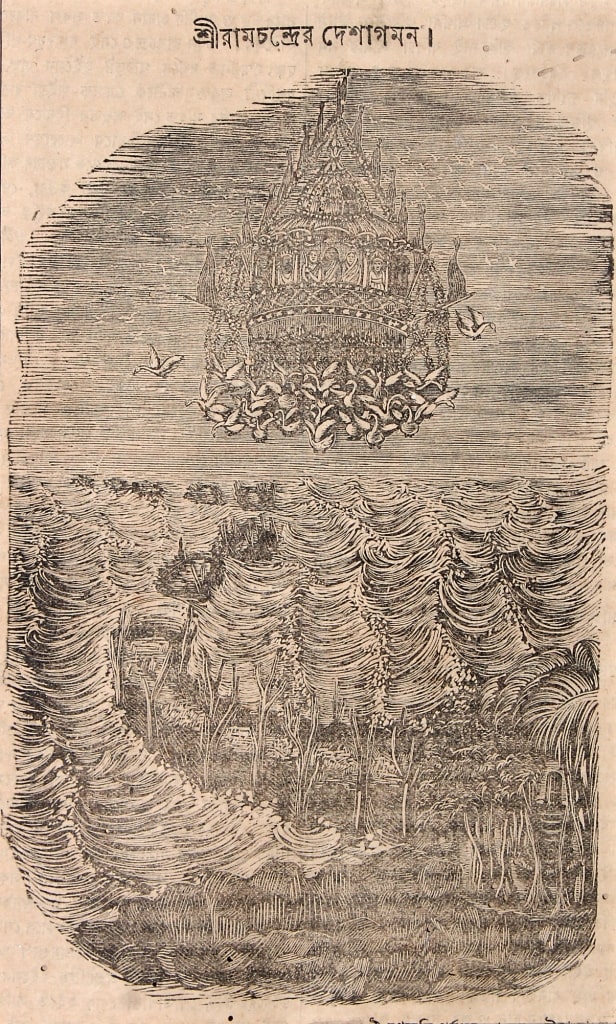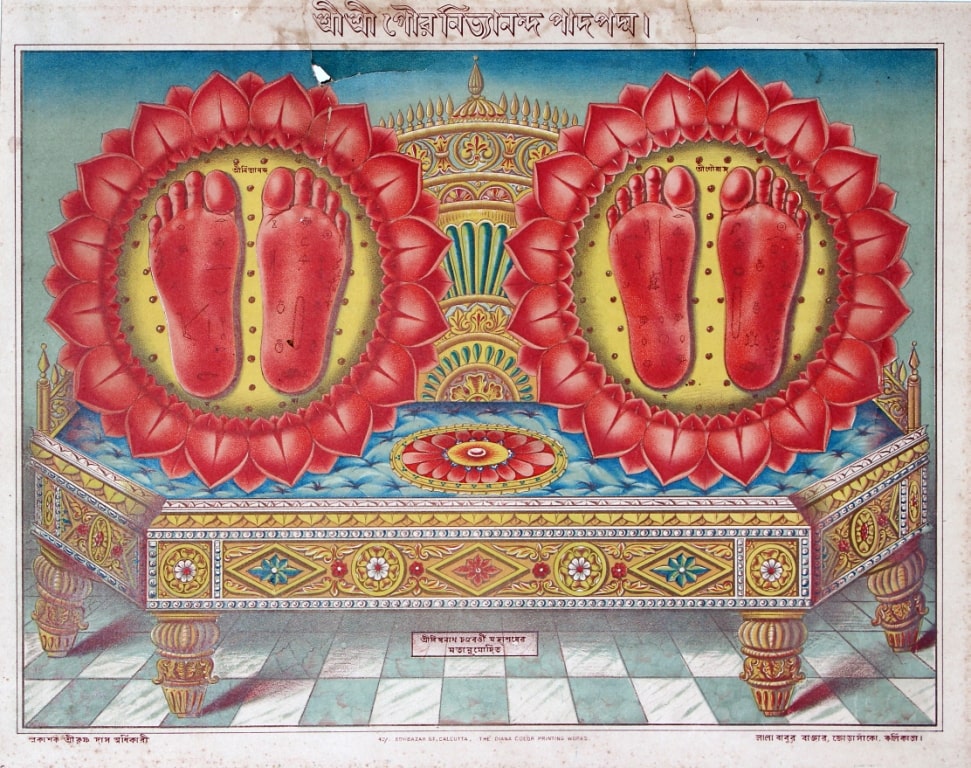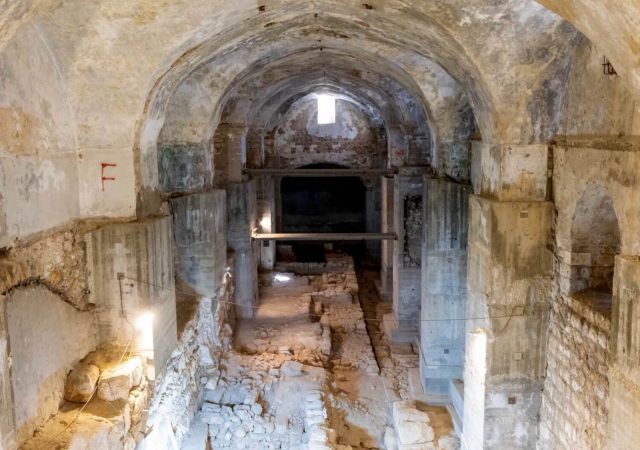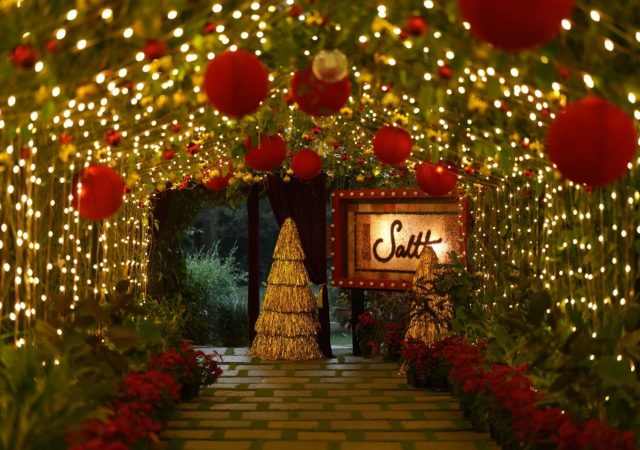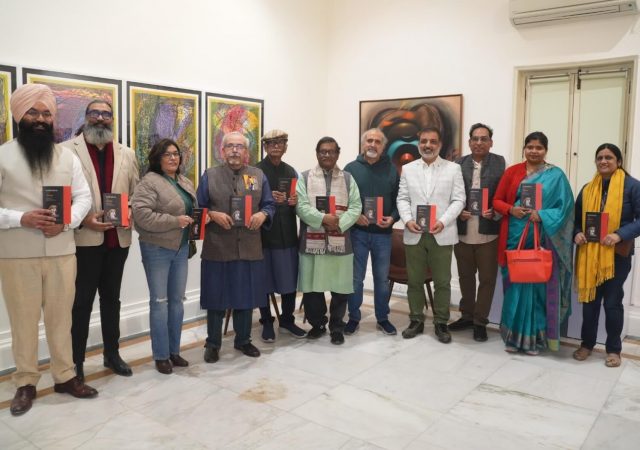MATI (Management of Art Treasures of India) is proud to present “Chitpur Chronicles: A Journey Through Sacred Imagery,” an exhibition showcasing the oldest and rarest Chitpur lithographs, from 6th to 30th September at Naivedyam basement, Hauz Khas village. This unique collection provides an unparalleled glimpse into a pivotal chapter of India’s visual history, where traditional religious art intersects with the modernity of print technology.
About the exhibition
Chitpur Lithographs, which emerged in the late 19th and early 20th centuries, represent a significant moment in India’s artistic evolution. These 100-year-old and rare prints primarily depict Hindu deities and mythological narratives, reflecting the rich cultural heritage of the Chitpur area of Kolkata. As we commemorate a century since their creation, this exhibition revisits these vibrant prints, exploring their cultural, religious, and artistic significance.
The exhibition features lithographs from renowned studios like Chore Bagan Art Studio, Kansaripara Art Studio, and K.A. Studio Litho Press. These artworks are more than just relics of India’s past; they are vivid reminders of a time when art, religion, and technology merged to shape collective consciousness. Depicting timeless mythological figures such as Abhimanyu, Beenapani (Goddess Saraswati), Jagaddhatri, and Kalighater Sri Sri Kali Mata (Goddess Kali from the famous Kalighat Temple), these prints offer a rare glimpse into a world where devotion and artistry were deeply intertwined.
Historical Context:
The rise of Chitpur Lithographs coincided with the Indian Renaissance, particularly in Bengal, a period marked by a renewed interest in indigenous art, culture, and spirituality. Lithography, introduced to India in the early 19th century, revolutionized the production and dissemination of images. Unlike traditional hand-painted religious icons, lithography allowed for mass production, making religious imagery accessible to a broader audience. The Chitpur neighborhood in Kolkata became a hub for this printing revolution, attracting artists and entrepreneurs eager to meet the growing demand for affordable religious images.
The Decline of Kalighat Painting:
The arrival of Chitpur Lithography marked a turning point in Bengal’s art scene, leading to the decline of Kalighat painting. Known for its bold outlines and vibrant colors, Kalighat painting was a popular art form in 19th-century Bengal. However, the precision, clarity, and affordability of lithographs, combined with the advent of chromolithography, gradually overshadowed the labor-intensive Kalighat paintings. As lithographs became more accessible, many Kalighat artists transitioned to producing lithographs or abandoned the craft altogether, resulting in the decline of this once-flourishing art form.
Artistic Significance:
The Chitpur Lithographs are celebrated for their vivid colors, intricate details, and devotional intensity. They depict Hindu gods and goddesses following traditional iconographic guidelines, yet they also reflect contemporary artistic influences, blending traditional Indian art with European printmaking techniques. These lithographs played a crucial role in standardizing representations of Hindu deities, creating a common visual language that transcended regional and cultural differences.
Cultural Impact:
The Chitpur Lithographs significantly shaped the visual culture of religious devotion in India. They served not only as objects of worship but also as educational tools, teaching the stories, attributes, and symbolism of various deities to a wide audience. In today’s digital age, these lithographs remind us of the enduring power of visual storytelling and the importance of preserving our cultural heritage.
This exhibition invites you to reflect on the enduring legacy of Chitpur Lithographs and their contribution to India’s cultural and artistic heritage. Join us as we explore these vibrant depictions of gods and goddesses, offering a window into a past where tradition met modernity and the sacred became accessible to all.
About MATI
MATI (Management of Art Treasures of India)
Founder-Trustee: Mr. Siddhartha Tagore
MATI (Management of Art Treasures of India) is a public trust. The main aim of this trust is to collect, preserve, document, and promote a variety of artifacts. The collection includes folk and tribal paintings, metal and wooden sculptures, jewellery, ethnic masks, vintage photographs, prints, oleographs, textiles,leather puppets, film posters, lobby cards, etc.
MATI has, perhaps, the largest collection of popular art. In its collection are calendar art, matchboxes, cigarette covers, postcards, and labels of consumer items. With a fully-equipped conservation and documentation team, our focus is to build a folk and tribal art archive to document tangible and intangible art heritage. MATI has organised lectures, seminars,
workshops, and special courses relating to folk and tribal art and contemporary tribal art since 2012. MATI organises social and charitable work.
In the years 2022-2024, MATI had the privilege of organising two successful exhibitions, “Ganika: In the Visual Culture of the 19th and 20th Centuries”; and “ Vādya: Folk Tribal and Classical Musical Instruments,” in collaboration with the National Crafts Museum and Hastkala Academy. Both of these exhibitions were very successful in terms of viewership and cultural awareness.
About the Founder of MATI, Siddhartha Tagore
Mr. Siddhartha Tagore founded MATI—Management of Art Treasures of India—in 2012; earlier, he established ‘Art Konsult’ about three decades ago with a vision to promote Indian contemporary art globally. The objective has always been to broaden perspectives and highlight India’s fading traditional and folk arts.


